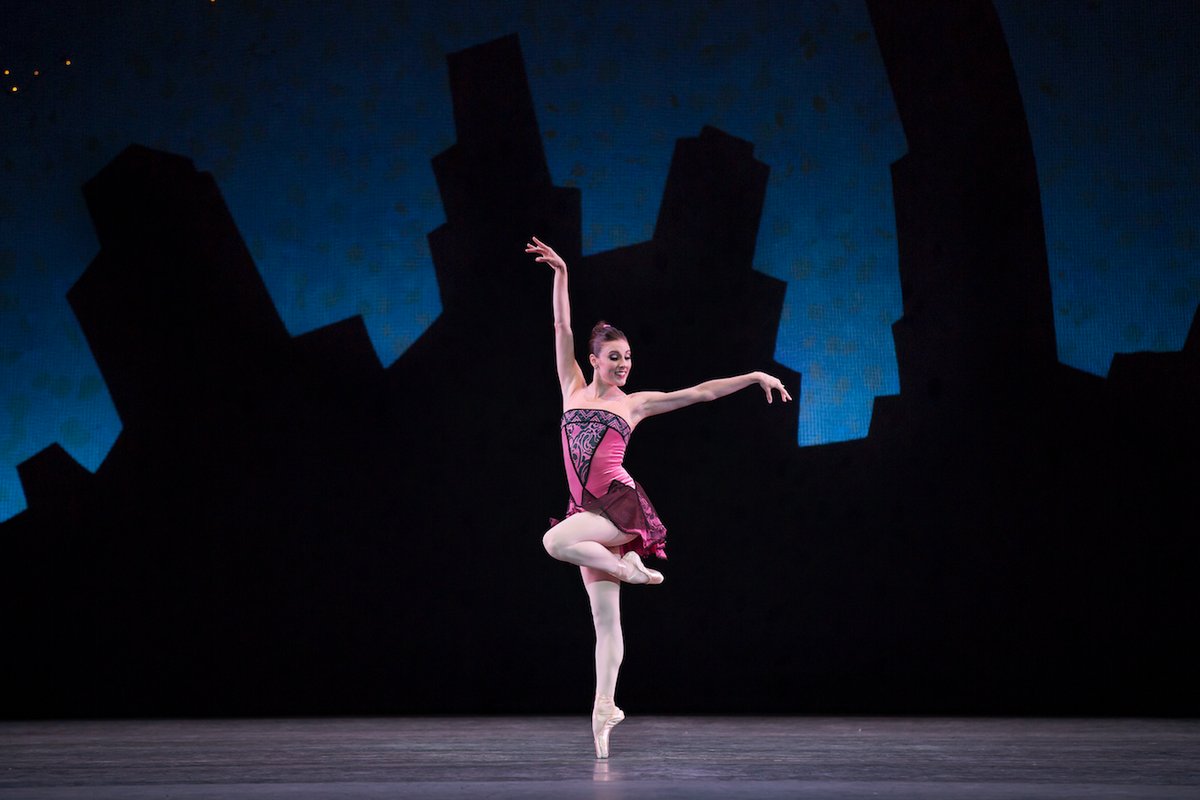The Jazzy Virtuoso: Tiler Peck's Dynamic Approach to Balanchine's "Who Cares?"
Carefree and confident, New York City Ballet’s Tiler Peck lights up the stage in “Fascinatin’ Rhythm,” one of the principal solos in Balanchine’s Who Cares? “It’s one of my favorites,” she says. “Every time I perform it, I feel like I’m doing it for the first time.” Choreographed for Patricia McBride in 1970, “Fascinatin’ Rhythm” requires impeccable technique and serious musicality to show off George Gershwin’s jazzy rhythms. Here, Peck shares how she makes the solo such a showstopper.
Musicality Matters
“Musicality is number one,” says Peck. “It’s the driving force behind the whole variation.” She recommends finding moments of stillness to contrast faster movements. In the first section, Peck sustains her piqué coupé to plié, “because it makes the hitch-kick afterward seem that much more surprising.” Before the slow sultry section, she pauses before slinking into another pose. “You can be still in the midst of the crazy-fast solo and show another facet of your dancing.”
The “Switch Switch”
Dancers tend to have trouble sustaining their balance during the fast arabesque/à la seconde/arabesque body changes (aka the “switch switch”). To stay over her standing leg, Peck suggests hitting a good arabesque first. “If you cheat and flip right to second, you’re not going to do it.” She also relies on her focus. “When I go to second, I look at my leg and then back to front for the arabesque. Torquing the body helps and gives me something else to think about.”
Play with Syncopation
Peck performs the échappé section differently every time. While she doesn’t change the steps, she syncopates them in various ways. “I let the music inspire me to hold an échappé here, or a passé there. It’s whatever I want to do in the moment!” When she goes to hold a position, she commits to it. “That makes it more exciting for me.”
Stamina Secret
It’s easy to lose steam towards the end of the two-and-a-half-minute solo, so Peck tricks herself into believing it’s easier than it actually is. “Instead of thinking of it as one long variation, I imagine it as three sections: the opening, the slow part in the middle and the end. From the échappés on, you’re home free!”
Pencil-Turn Finish
To control the last diagonal of dizzying turns, focus less on your spot and more on the rhythm. “Keep in tempo with the four piqué walks and step-up double pencil. Find your position with the leg at 45 degrees and don’t let it waver,” Peck says, because sneaking into the turn will make it even harder. “If you really listen to the music, it will drive you home.”
This story originally appeared in the December 2015/January 2016 issue of Pointe.





